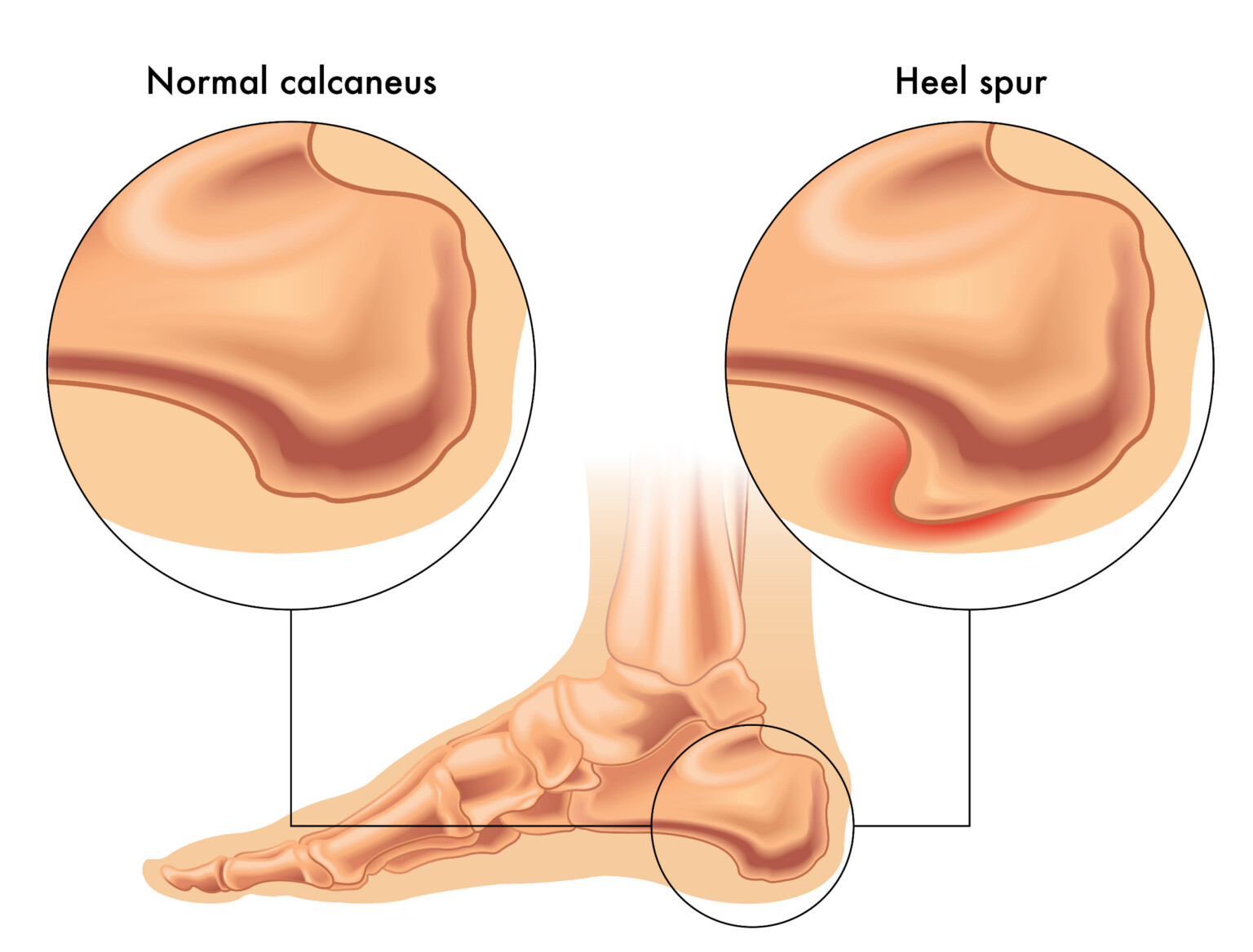Bone Spurs: Symptoms, Causes, Treatment
What are the symptoms of a bone spur?
The symptoms of a bone spur (also called osteophyte) can vary depending on its location, but some common symptoms include:
- Pain – This is often the primary symptom. The pain may be dull and achy or sharp, and it can worsen with activity.
- Stiffness – Bone spurs can cause stiffness and reduced range of motion in the affected joint or area.
- Numbness or tingling – If the bone spur presses on nearby nerves, it can cause numbness, tingling, or weakness in the area supplied by that nerve.
- Swelling – Inflammation around the bone spur can lead to swelling and redness.
- Grinding sensation – Bone spurs in joints may cause a grinding, crackling, or popping sensation with movement.
- Lumps or deformities – In some cases, the bone spur itself may be felt as a hard, bony protrusion or lump under the skin.
Some common locations and associated symptoms include:
- Spine (neck or back) – Pain, stiffness, numbness/tingling in arms or legs
- Feet (heel) – Pain and difficulty walking, especially first steps after rest
- Shoulders – Pain with overhead arm movements, limited range of motion
- Hips – Pain in the groin, buttock or front of hip, limping
- Knees – Pain, swelling, stiffness, grinding sensation
The symptoms are often worse with activities that cause friction or pressure on the area of the bone spur. Resting the affected area can provide temporary relief, but the spur itself will remain unless treated.
What causes bone spurs?
Bone spurs (osteophytes) develop due to bony growths that form along the edges of bones. They can be caused by several underlying conditions and factors:
- Osteoarthritis: This is the most common cause. As the cartilage wears away in the joints, the body attempts to compensate by growing extra bone in the area. This leads to bone spur formation.
- Joint damage/injury: Injuries or other trauma to a joint can disrupt the smooth joint surfaces and trigger bone spurs as the body tries to repair the damage.
- Poor biomechanics: Abnormal movement patterns or posture over time can put excessive stress on certain joints and promote bone spur growth.
- Aging: As we get older, the joints naturally start to degenerate, increasing the risk of developing bone spurs.
- Obesity: Increased weight puts more mechanical stress on weight-bearing joints like knees and hips, which can spur bone growth.
- Inflammatory conditions: Diseases like diffuse idiopathic skeletal hyperostosis (DISH) or ankylosing spondylitis promote bony overgrowth.
- Metabolic disorders: Conditions affecting bone metabolism like hyperparathyroidism may increase osteophyte formation.
- Genetics: Some people may have an inherited tendency to develop bone spurs more easily.
While bone spurs themselves are not dangerous, they can cause pain, limit mobility, and impinge on nerves or other soft tissues around the affected area when they become large enough. Treatment aims to address the underlying cause and manage symptoms.
What is the treatment for bone spurs?
The treatment for bone spurs depends on the location, severity of symptoms, and underlying cause. Here are some common treatment options:
Non-surgical treatments:
- Medications – Anti-inflammatory drugs (NSAIDs) like ibuprofen or naproxen can help reduce pain and inflammation.
- Physical therapy – Exercises and stretches can improve flexibility, strength, and range of motion around the affected area.
- Steroid injections – Corticosteroid injections into the joint or soft tissue area can provide temporary pain relief.
- Orthotics – Shoe inserts, braces, or splints can help take pressure off the bone spur and maintain proper alignment.
- Weight loss – Losing weight can reduce stress on weight-bearing joints like knees and hips.
- Activity modification – Avoiding activities that aggravate symptoms can provide relief.
Surgical treatments:
- Bone spur removal (osteophyte resection) – The bony projection is surgically removed or shaved down to prevent impingement.
- Joint repair/replacement – For severe osteoarthritis, procedures like joint resurfacing or joint replacement may be recommended.
- Spinal decompression – For spinal stenosis, a laminectomy removes bone spurs pressing on the spinal cord/nerves.
- Soft tissue repair – Tendon/ligament releases if bone spurs are causing impingement.
Surgery is usually only considered if non-surgical methods fail to provide adequate symptom relief and mobility, or if there is nerve impingement.
The treatment approach aims to address the underlying condition causing the bone spur growth, provide pain relief, improve joint flexibility/function, and prevent further complications.




